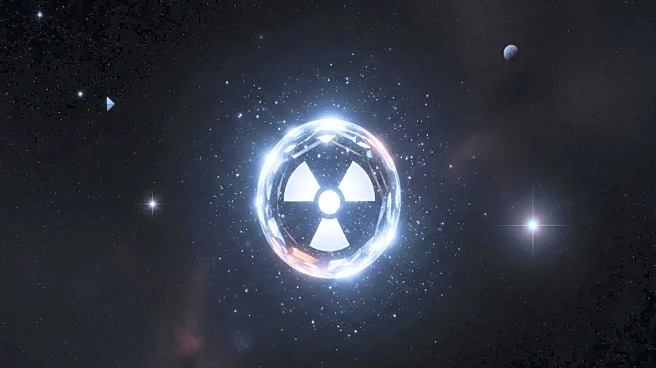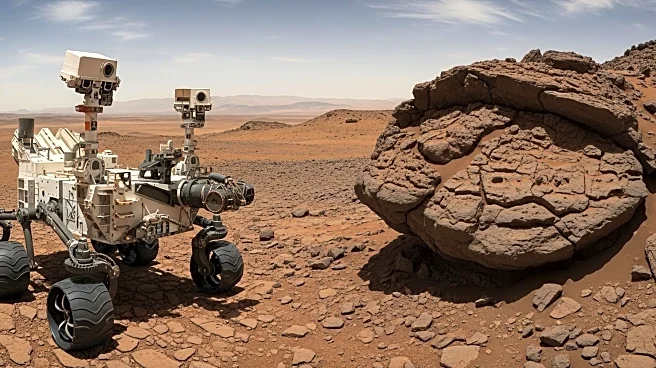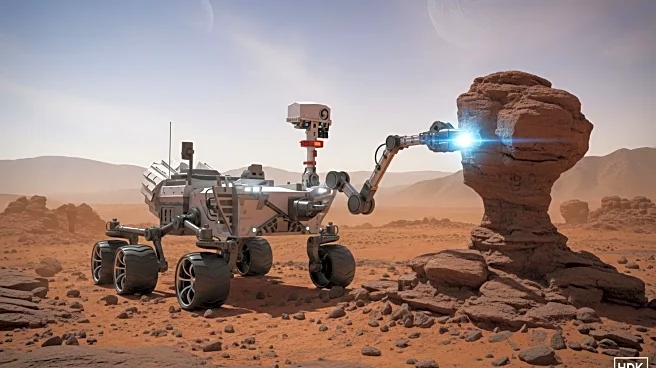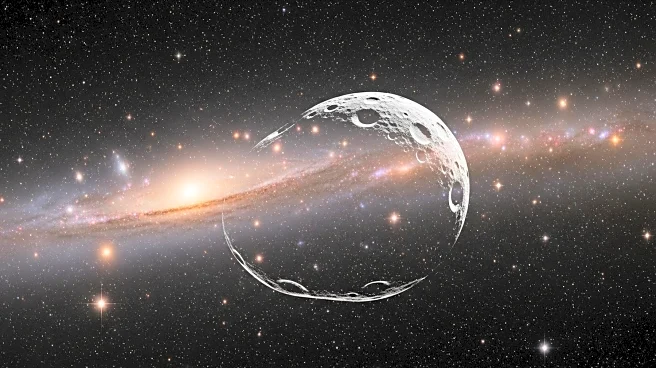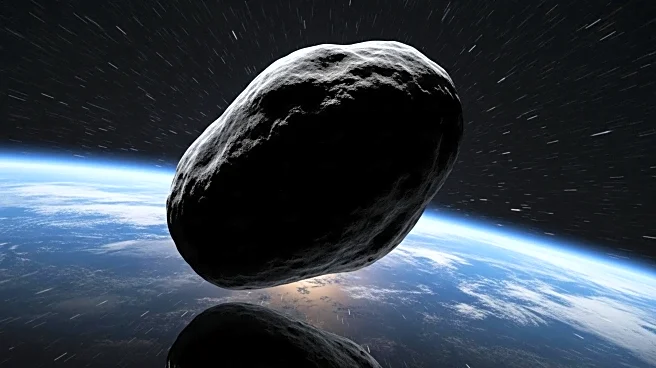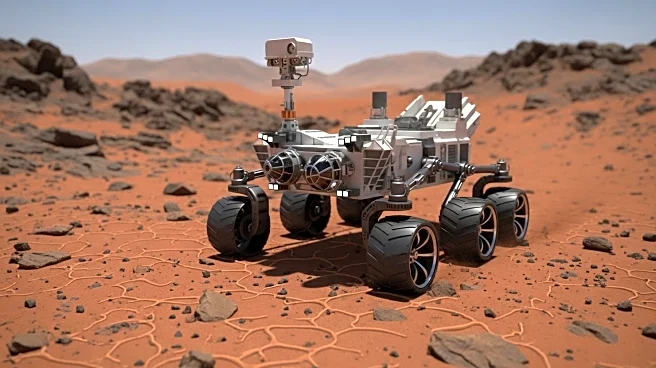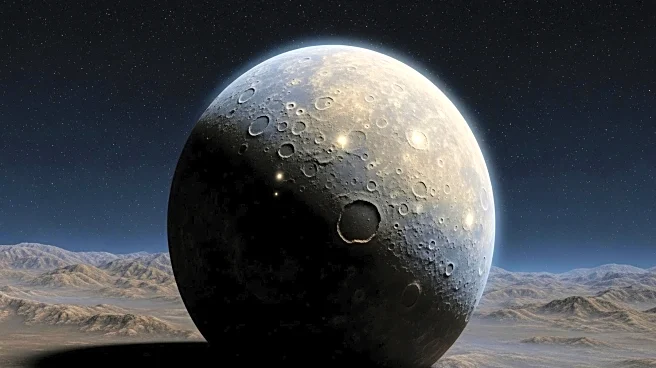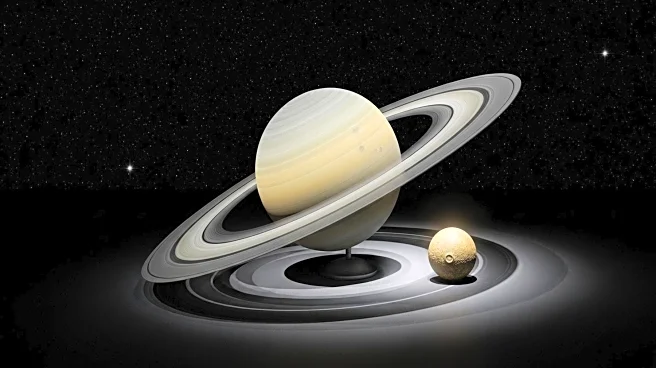What's Happening?
Recent findings from NASA's Cassini mission have unveiled a complex interaction between radiation and the icy surface of Saturn's moon Enceladus. Researchers have discovered that radiation bombarding Enceladus's surface could be responsible for creating organic molecules previously thought to originate from the moon's subsurface ocean. This revelation challenges the assumption that these molecules are indicators of habitability, suggesting instead that they might be formed through radiation-driven chemistry. The study, presented at the EPSC-DPS2025 Joint Meeting, highlights the need to reassess the potential habitability of Enceladus's ocean.
Why It's Important?
The discovery has significant implications for astrobiology and the search for life beyond Earth. It suggests that the presence of organic molecules on icy moons may not necessarily indicate a habitable environment, as previously thought. This finding could alter the criteria used to assess the potential for life on other celestial bodies, impacting future missions and research in planetary science. Understanding the true origins of these molecules is crucial for accurately evaluating the habitability of environments in the outer solar system.
What's Next?
Future missions to Enceladus will need to differentiate between organics derived from the ocean and those formed by radiation. This will require more sophisticated instruments and techniques to analyze the moon's surface and plumes. The European Space Agency is considering a mission to Enceladus as part of its Voyage 2050 program, which could provide the necessary data to resolve these questions. Continued research and exploration will be essential to fully understand the implications of these findings.
Beyond the Headlines
The study raises ethical and scientific questions about the interpretation of data from space missions. It underscores the importance of considering multiple hypotheses and the potential for non-biological processes to mimic signs of life. This could lead to a broader understanding of the chemical processes occurring on icy moons and their role in the evolution of the solar system.

